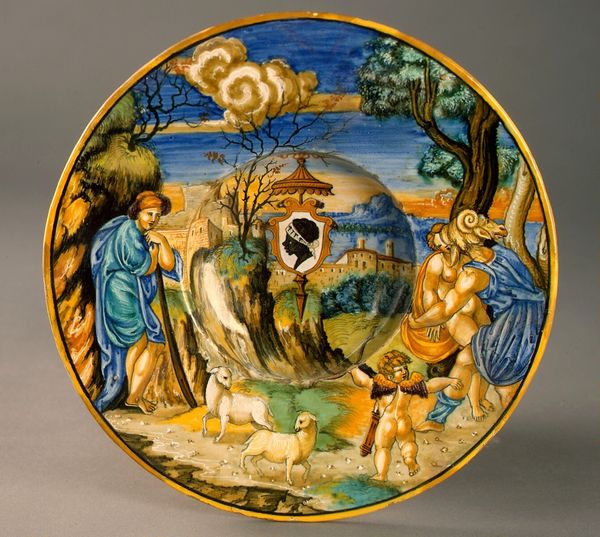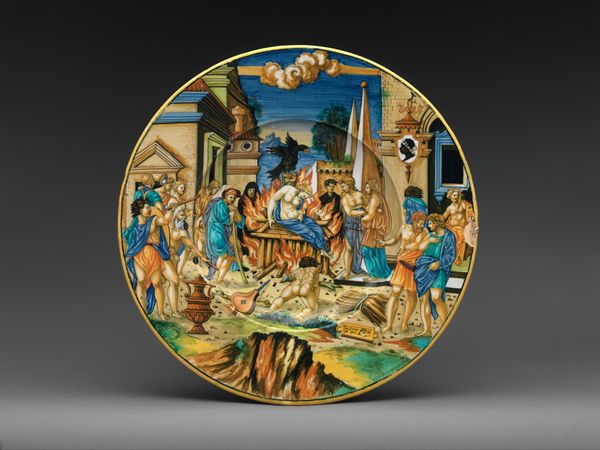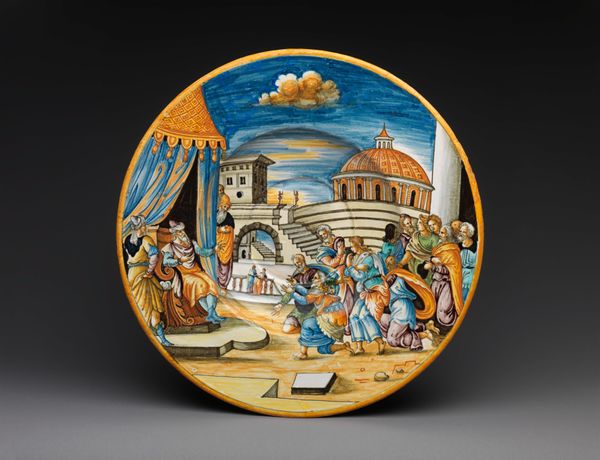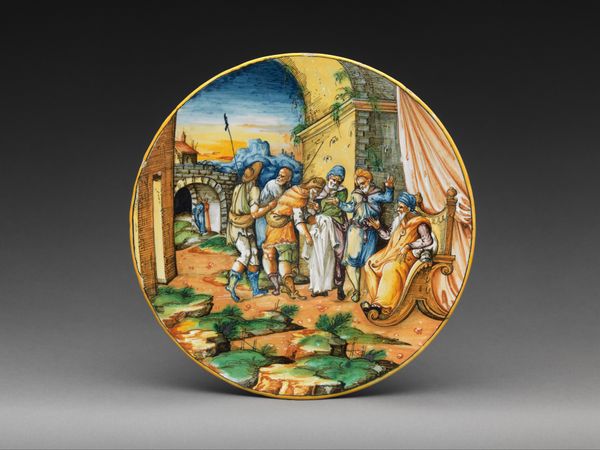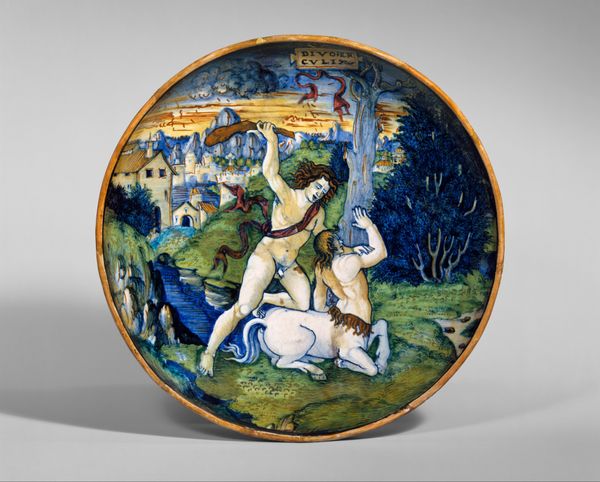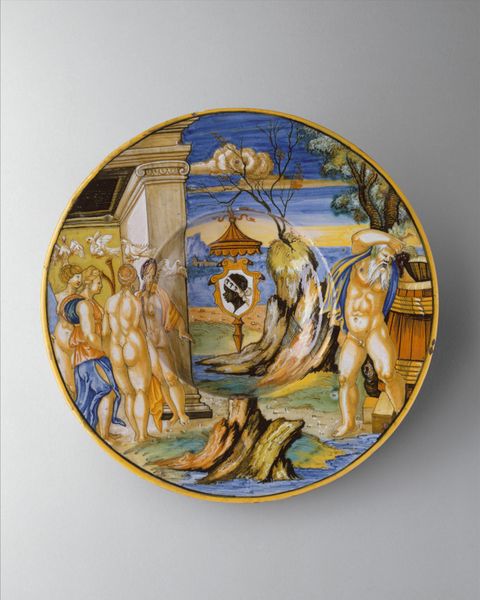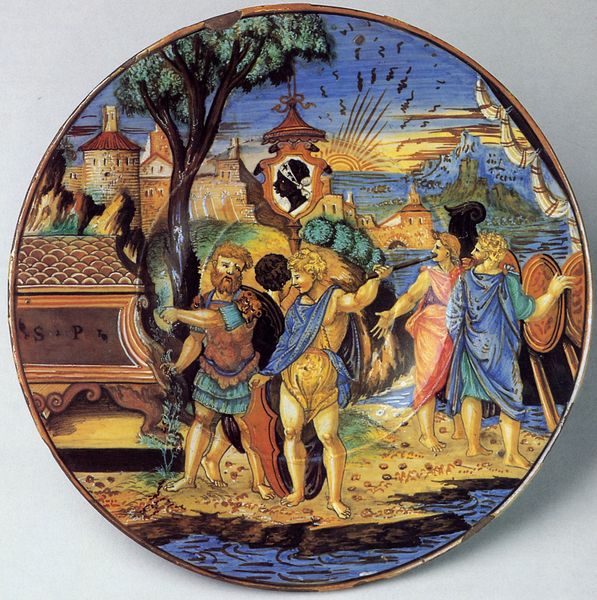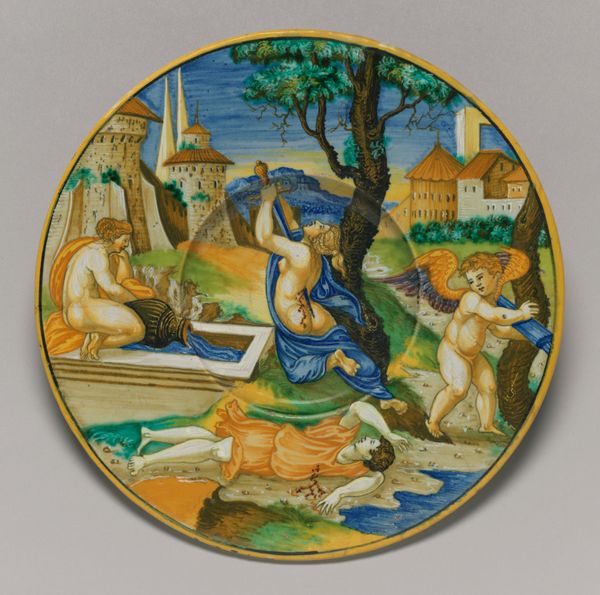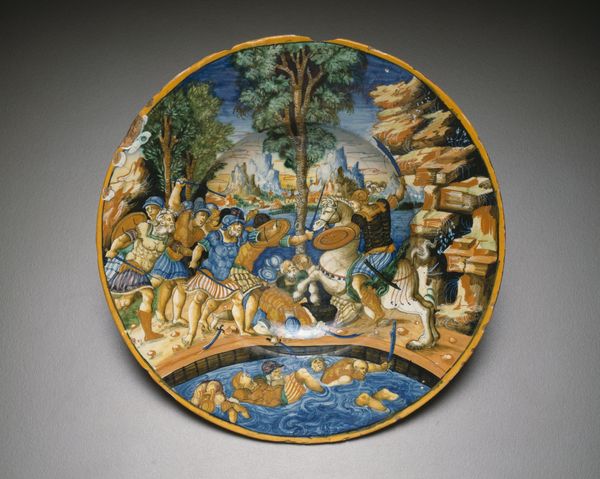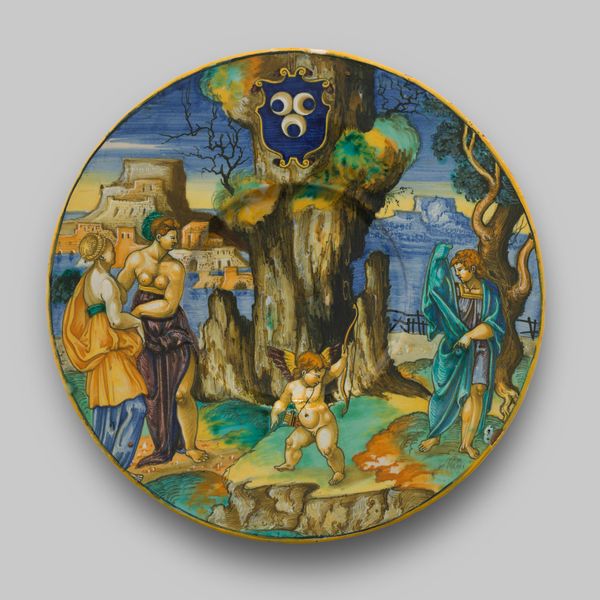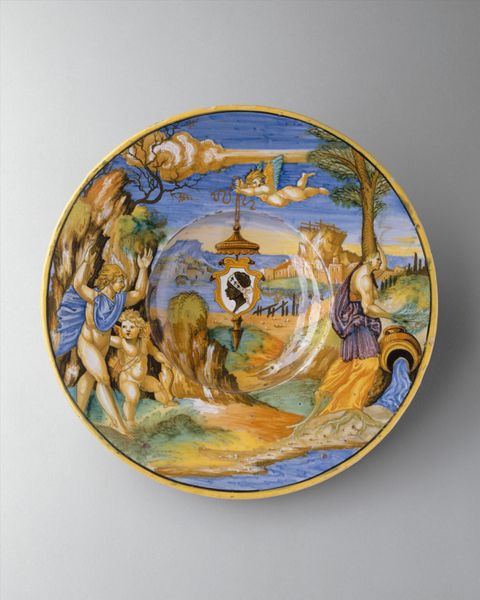
Plate with Story of Numa Pompilius and Arms of Gonzaga c. 1560
0:00
0:00
intaglio, ceramic
#
narrative-art
#
intaglio
#
landscape
#
ceramic
#
figuration
#
history-painting
#
decorative-art
#
italian-renaissance
Dimensions: Diameter: 25.1 cm (9 7/8 in.)
Copyright: Public Domain
Editor: So, here we have "Plate with Story of Numa Pompilius and Arms of Gonzaga," created around 1560 by Urbino Potteries. It’s a ceramic intaglio, currently at the Art Institute of Chicago. There's something theatrical about it; like a scene frozen from an epic play. What do you see in this piece? Curator: I see a complex negotiation of power and historical narrative, carefully curated for the Gonzaga family. This plate isn't just decorative; it's a carefully constructed piece of propaganda. Consider the choice of Numa Pompilius, the legendary second king of Rome, known for law and peace. Why associate the Gonzaga family, already powerful, with such a figure? Editor: Perhaps they wanted to appear wise and just? Curator: Precisely! This is a deliberate attempt at self-fashioning. It says, "We are not just powerful, we are benevolent rulers, bringing civilization and order.” The Gonzaga family, of course, is strategically placed within this narrative through their coat of arms at the top of the plate. Who commissioned this artwork and how did the plate function within the Gonzaga household? Editor: Maybe to impress guests at their dinners? Were these historical narratives commonly used in such decorations at the time? Curator: Absolutely. These plates, known as istoriato ware, were highly fashionable. Narratives were drawn from classical history, mythology, and the Bible, often subtly reflecting the commissioner’s aspirations and anxieties. Think about the implications – visually consuming history, crafting one's image through the stories one chooses to display. The Renaissance was obsessed with legacy. Editor: It’s fascinating how a seemingly decorative object could be such a potent tool for constructing an image! I had not considered this historical approach, thanks. Curator: Indeed, considering the agency of patrons invites fresh dialogue on the narratives embedded in art and how these stories shape our perception of the past.
Comments
No comments
Be the first to comment and join the conversation on the ultimate creative platform.

